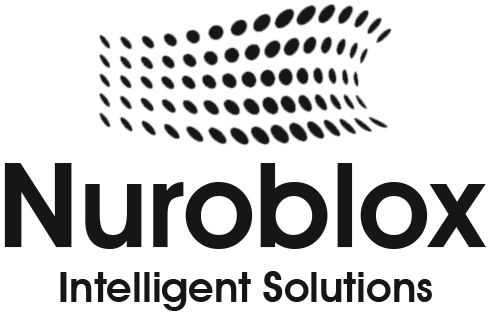Enterprise AI Compliance: What Business Leaders Must Know
As Artificial Intelligence (AI) moves from experimentation to enterprise-wide deployment, a new challenge is emerging: compliance at scale.
AI systems today make decisions that directly impact customers, employees, and business outcomes, whether it’s automating credit approvals, screening job candidates, or analyzing user behavior. While these systems bring speed and intelligence to operations, they also raise critical questions about data privacy, accountability, and fairness.
Global regulators are responding. Laws like the EU AI Act, GDPR, and CCPA/CPRA are redefining the standards for how AI can be used, especially when it involves personal data or high-risk use cases. For enterprises, this means compliance is no longer optional; it’s foundational to building trust, avoiding fines, and safeguarding brand reputation.
This blog will help business leaders understand the compliance landscape shaping enterprise AI, what the risks are, which regulations matter most, and how to align AI strategies with governance, ethics, and operational control.
If you’re leading digital transformation or investing in AI at scale, this is what you must know.
The Compliance Challenge in Enterprise AI
AI adoption in the enterprise is accelerating, but so are the regulatory, ethical, and operational challenges that come with it. Unlike traditional software systems, AI doesn’t just follow static rules; it learns, adapts, and makes autonomous decisions based on vast amounts of data. This introduces a new layer of compliance complexity that many organizations are still unprepared for.
1. AI Operates in a Legal Grey Area- Most AI systems today are deployed in environments where regulations are still evolving. While data privacy laws like GDPR, CCPA, and India’s DPDP Act apply to how AI handles personal information, few laws currently govern how AI models make decisions. This creates a grey zone where businesses face uncertainty and risk when deploying AI at scale.
Challenge: Staying compliant in a fast-moving regulatory landscape without clear global standards.
2. AI Decisions Are Often Unexplainable- Enterprise AI systems, especially those using deep learning or black-box models, can be difficult to interpret. This lack of transparency makes it hard to justify automated decisions to regulators, customers, or internal stakeholders.
Risk: Inability to provide clear explanations or audit trails can lead to non-compliance, especially under laws that require algorithmic accountability.
3. Data Usage and Consent Are Often Overlooked- AI systems rely heavily on data, often aggregated from multiple sources. But without robust governance, data can be used in ways that violate user consent or cross legal boundaries.
Example: Training a model on customer support data that includes sensitive PII without consent could breach GDPR or sector-specific laws like HIPAA.
4. Bias and Discrimination Risks Are Hard to Detect- Even well-trained models can unintentionally reinforce bias or generate unfair outcomes. In regulated industries like finance, insurance, and HR, biased AI can quickly translate into discrimination lawsuits or regulatory penalties.
Reality: Many enterprises lack the tools or expertise to test AI systems for fairness, leading to blind spots in compliance.
5. Siloed Compliance Efforts Create Gaps- In many enterprises, compliance, legal, and AI/tech teams operate in silos. This lack of coordination results in patchwork policies, inconsistent oversight, and missed risks, especially as AI touches multiple business functions.
Need: Cross-functional governance and clear lines of accountability across departments.
Enterprise AI is a powerful driver of growth, but also a source of significant compliance risk if not governed properly. Business leaders must recognize that AI is not just a technology issue; it’s a compliance and trust issue that requires active oversight, ethical guardrails, and continuous alignment with evolving laws.
Key Regulatory Frameworks Affecting Enterprise AI

As enterprises scale AI adoption, they must operate within a rapidly evolving global regulatory landscape. Governments and regulatory bodies are tightening oversight to ensure that AI systems are safe, fair, explainable, and respectful of individual rights, especially when they impact consumers, employees, or sensitive data.
Below are the most critical frameworks shaping enterprise AI compliance:
1. GDPR (General Data Protection Regulation) – European Union
- Focus: Data privacy, user consent, and automated decision-making
- Impact on AI:
- Requires organizations to obtain clear consent for using personal data
- Grants users the right to opt-out of automated decision-making
- Mandates transparency and explainability in AI-based profiling
- Enterprise implication: You must ensure AI systems can explain their outputs, allow human intervention, and demonstrate lawful data usage.
2. EU AI Act (Expected to Roll Out 2025–2026)
- Focus: Risk-based regulation of AI systems
- Key Highlights:
- Categorizes AI applications as unacceptable, high, limited, or minimal risk
- High-risk systems (e.g., biometric ID, hiring, credit scoring) must meet strict requirements:
- Transparency
- Data governance
- Human oversight
- Robust documentation and monitoring
- Enterprise implication: AI projects in HR, finance, healthcare, or security may require pre-market conformity assessments and ongoing compliance reporting.
3. CCPA / CPRA (California Consumer Privacy Act / California Privacy Rights Act) – USA
- Focus: Consumer rights and data transparency
- Impact on AI:
- Consumers have the right to know, opt out, and delete personal data used in AI systems
- CPRA expands these rights to automated decision-making and profiling
- Enterprise implication: Any AI-driven personalization, targeting, or decision-making tied to California residents must support opt-out mechanisms and detailed privacy disclosures.
4. India’s DPDP Act (Digital Personal Data Protection Act)
- Focus: Consent-based data usage and cross-border data flows
- Impact on AI:
- Requires explicit consent for data use and processing
- Enforces purpose limitation and data minimization
- Introduces data fiduciary accountability for AI outcomes
- Enterprise implication: AI systems in India must be consent-aware, limited in scope, and prepared for stricter cross-border compliance.
5. HIPAA (Health Insurance Portability and Accountability Act) – USA
- Focus: Protection of health data
- Impact on AI:
- Applies to any AI system that processes, stores, or transmits Protected Health Information (PHI)
- Requires data encryption, access control, and audit logs
- Enterprise implication: Healthcare AI solutions must be built with privacy and security by design to avoid regulatory violations.
6. Sector-Specific Regulations
- FINRA (Financial Industry Regulatory Authority) – AI in trading, fraud detection, and customer engagement
- FCRA (Fair Credit Reporting Act) – Credit scoring and loan decisioning AI
- EEOC (Equal Employment Opportunity Commission) – AI used in hiring or promotion decisions
These frameworks demand fairness, auditability, and non-discrimination even when AI is behind the scenes.
Why This Matters
Non-compliance is not just about fines’s about trust, market access, and brand reputation. Business leaders must align AI strategy with compliance requirements across every region and sector they operate in. A proactive approach now can prevent costly legal, ethical, and operational risks later.
Core Pillars of AI Compliance.

To navigate the complex and evolving regulatory environment, enterprises must build AI systems on a foundation of governance, accountability, and trust. These are not just technical goals they are strategic imperatives. Whether you’re deploying AI in customer experience, operations, HR, or finance, the following five core pillars define a strong AI compliance framework:
1. Data Privacy and Protection
AI is fueled by data, and often, that data includes personally identifiable information (PII). Ensuring its lawful, ethical, and secure use is a non-negotiable pillar of compliance.
Key Focus Areas:
- Collect only necessary data (data minimization)
- Obtain clear and informed user consent
- Implement encryption, masking, and access controls
- Comply with regional privacy laws (e.g., GDPR, CCPA, DPDP)
Why it matters: Mishandled data can lead to major legal violations and erosion of customer trust.
2. Explainability and Transparency
AI systems must be understandable not only to developers but to regulators, auditors, and end users. Black-box models may offer high performance but often fail compliance standards that require explainability.
Key Focus Areas:
- Use interpretable models for high-risk decisions
- Document how models work and why decisions are made
- Communicate outputs clearly to stakeholders
- Support user rights to contest or request human review
Why it matters: Transparency is essential for accountability, fairness, and legal defensibility.
3. Fairness and Bias Mitigation
AI can unintentionally reinforce discrimination if trained on biased data. Fairness isn’t just ethical—it’s a legal requirement in domains like hiring, lending, insurance, and healthcare.
Key Focus Areas:
- Audit models for bias across gender, race, age, etc.
- Use balanced, diverse, and representative datasets
- Monitor fairness continuously after deployment
- Provide human oversight in sensitive use cases
Why it matters: Bias can lead to non-compliance, lawsuits, and reputational damage.
4. Security and Resilience
AI systems are vulnerable to attacks, whether through adversarial inputs, model inversion, or data poisoning. Compliance also demands that models and data are secure across their lifecycle.
Key Focus Areas:
- Secure model training environments
- Protect APIs and endpoints from misuse
- Monitor for abnormal behavior or unauthorized access
- Ensure business continuity and fail-safes for critical AI systems
Why it matters: Data breaches and model compromises can lead to serious financial and legal consequences.
5. Auditability and Accountability
AI compliance demands clear answers to critical questions: Who built the model? What data was used? How is performance being monitored? Enterprises must maintain an audit trail at every stage of the AI lifecycle.
Key Focus Areas:
- Version control for models and datasets
- Maintain logs of decisions, training data, and changes
- Define ownership across technical and business teams
- Prepare for internal reviews and external audits
Why it matters: Without auditability, it’s impossible to prove compliance or identify where things went wrong.
Enterprise AI compliance doesn’t start with checklists, it starts with principles. These five pillars help organizations embed governance and trust into their AI initiatives, ensuring that innovation doesn’t come at the cost of responsibility.
Best Practices for Business Leaders
AI is no longer just a technical initiative, it’s a business transformation engine. But with its power comes responsibility. Business leaders must go beyond delegation and take an active role in shaping AI strategies that are ethical, compliant, and enterprise-ready. Here are the most effective practices to lead AI compliance from the top down:
1. Treat AI Compliance as a Strategic Priority
Don’t wait for regulators to catch up or for incidents to trigger action. Embed compliance into your AI roadmap and governance strategy from day one.
Action Step: Include AI compliance in board-level discussions, risk assessments, and enterprise OKRs (Objectives and Key Results).
2. Establish an AI Governance Task Force
AI touches multiple domains legal, data science, risk, cybersecurity, and operations. A dedicated, cross-functional task force can ensure alignment across teams and streamline oversight.
Action Step: Form a committee that includes CIOs, CDOs, legal, compliance, security, and line-of-business leaders to evaluate risks, define policies, and monitor ongoing compliance.
3. Build Compliance Into the AI Lifecycle
AI compliance isn’t a post-launch activity. From ideation to development, testing, deployment, and monitoring, compliance must be a part of every phase.
Action Step: Implement privacy-by-design, conduct fairness audits, and document data and model decisions as standard practice in AI development pipelines.
4. Invest in Training Across the Organization
Compliance failures often stem from lack of awareness, not malice. Equip your teams, technical and non-technical, with the knowledge to make informed decisions.
Action Step: Provide role-specific AI compliance training for data scientists, engineers, product managers, and legal/compliance professionals.
5. Choose Technology Partners with Built-In Compliance Controls
The platforms and vendors you work with should support your compliance goals, not complicate them. Look for tools that offer:
- Built-in explainability
- Privacy features (e.g., anonymization, encryption)
- Logging, versioning, and audit trails
- Compliance certifications (ISO, SOC, HIPAA, etc.)
Action Step: Conduct vendor assessments that prioritize compliance-readiness and transparency in AI models and APIs.
6. Conduct Regular Audits and Impact Assessments
AI systems evolve and so should your oversight. Establish a rhythm of reviewing models, datasets, and outcomes to ensure continued alignment with regulations and ethics.
Action Step:
Schedule recurring AI risk assessments, privacy impact assessments (PIAs), and bias audits, especially for high-impact use cases.
7. Be Transparent with Stakeholders
Whether it’s regulators, customers, or employees, transparency builds trust. Communicate clearly about how AI is used, what safeguards are in place, and how individuals can exercise their rights.
Action Step: Create accessible AI disclosures, opt-out mechanisms, and policies on automated decision-making.
Leadership Matters
When business leaders actively champion AI compliance, it sends a strong message across the enterprise: Innovation and integrity go hand in hand. These best practices not only reduce risk, they unlock AI’s full potential by building systems people can trust.
Conclusion
As AI continues to transform how enterprises operate, compliance is no longer just a technical requirement it’s a leadership imperative. The risks tied to unregulated AI are real: data misuse, bias, regulatory penalties, reputational damage, and loss of stakeholder trust. But with the right governance, these risks can be mitigated and even turned into competitive advantages.
Business leaders must recognize that compliance isn’t a blocker of innovation, it’s an enabler of sustainable growth. By embedding privacy, transparency, fairness, and accountability into every stage of the AI lifecycle, organizations can confidently scale AI while staying on the right side of regulation and public trust.
The future of enterprise AI belongs to those who act responsibly today. Leaders who invest in compliance, align their teams around ethical principles, and adopt proactive governance will not only avoid risk, they’ll shape the next generation of trusted, enterprise-grade AI.


